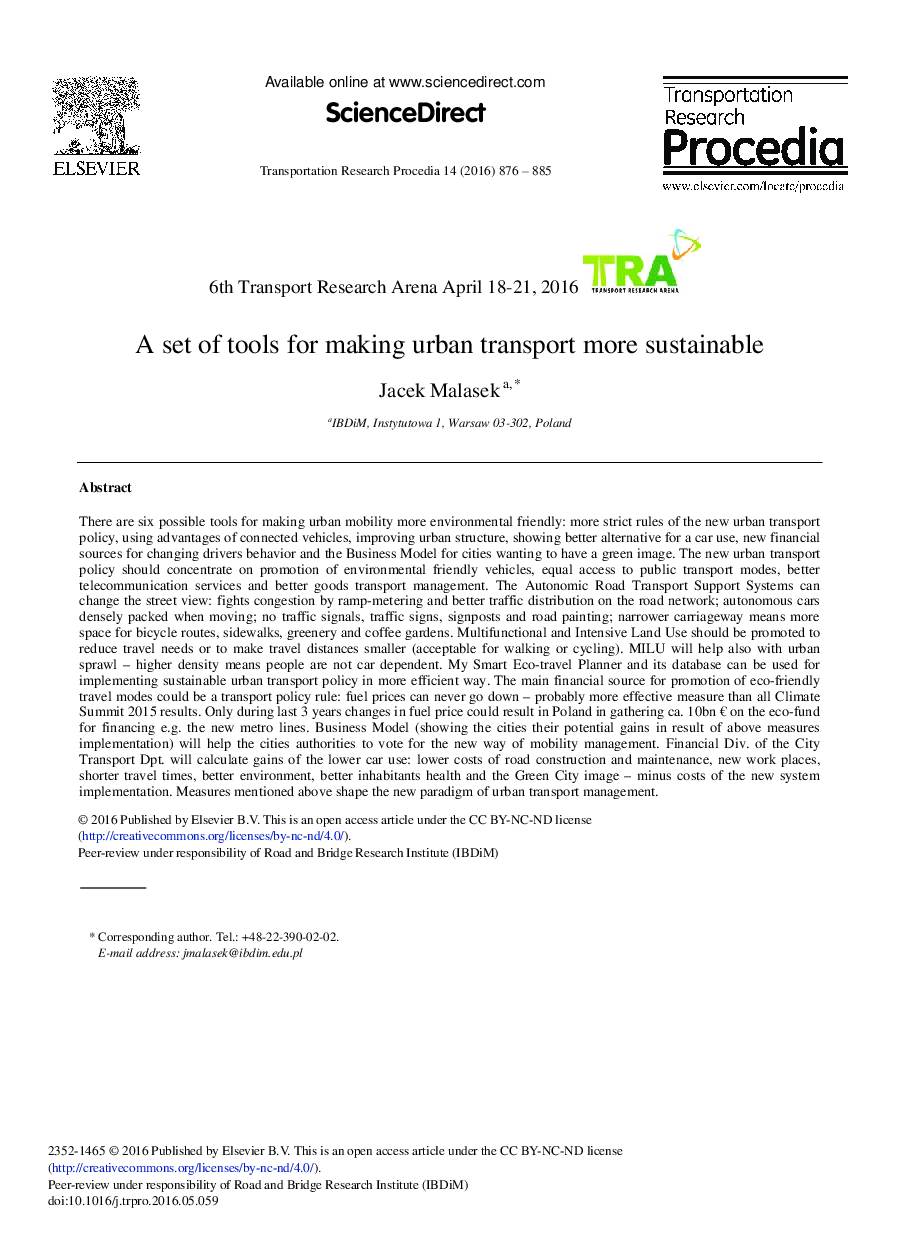| Article ID | Journal | Published Year | Pages | File Type |
|---|---|---|---|---|
| 1106277 | Transportation Research Procedia | 2016 | 10 Pages |
There are six possible tools for making urban mobility more environmental friendly: more strict rules of the new urban transport policy, using advantages of connected vehicles, improving urban structure, showing better alternative for a car use, new financial sources for changing drivers behavior and the Business Model for cities wanting to have a green image. The new urban transport policy should concentrate on promotion of environmental friendly vehicles, equal access to public transport modes, better telecommunication services and better goods transport management. The Autonomic Road Transport Support Systems can change the street view: fights congestion by ramp-metering and better traffic distribution on the road network; autonomous cars densely packed when moving; no traffic signals, traffic signs, signposts and road painting; narrower carriageway means more space for bicycle routes, sidewalks, greenery and coffee gardens. Multifunctional and Intensive Land Use should be promoted to reduce travel needs or to make travel distances smaller (acceptable for walking or cycling). MILU will help also with urban sprawl – higher density means people are not car dependent. My Smart Eco-travel Planner and its database can be used for implementing sustainable urban transport policy in more efficient way. The main financial source for promotion of eco-friendly travel modes could be a transport policy rule: fuel prices can never go down – probably more effective measure than all Climate Summit 2015 results. Only during last 3 years changes in fuel price could result in Poland in gathering ca. 10bn € on the eco-fund for financing e.g. the new metro lines. Business Model (showing the cities their potential gains in result of above measures implementation) will help the cities authorities to vote for the new way of mobility management. Financial Div. of the City Transport Dpt. will calculate gains of the lower car use: lower costs of road construction and maintenance, new work places, shorter travel times, better environment, better inhabitants health and the Green City image – minus costs of the new system implementation. Measures mentioned above shape the new paradigm of urban transport management.
